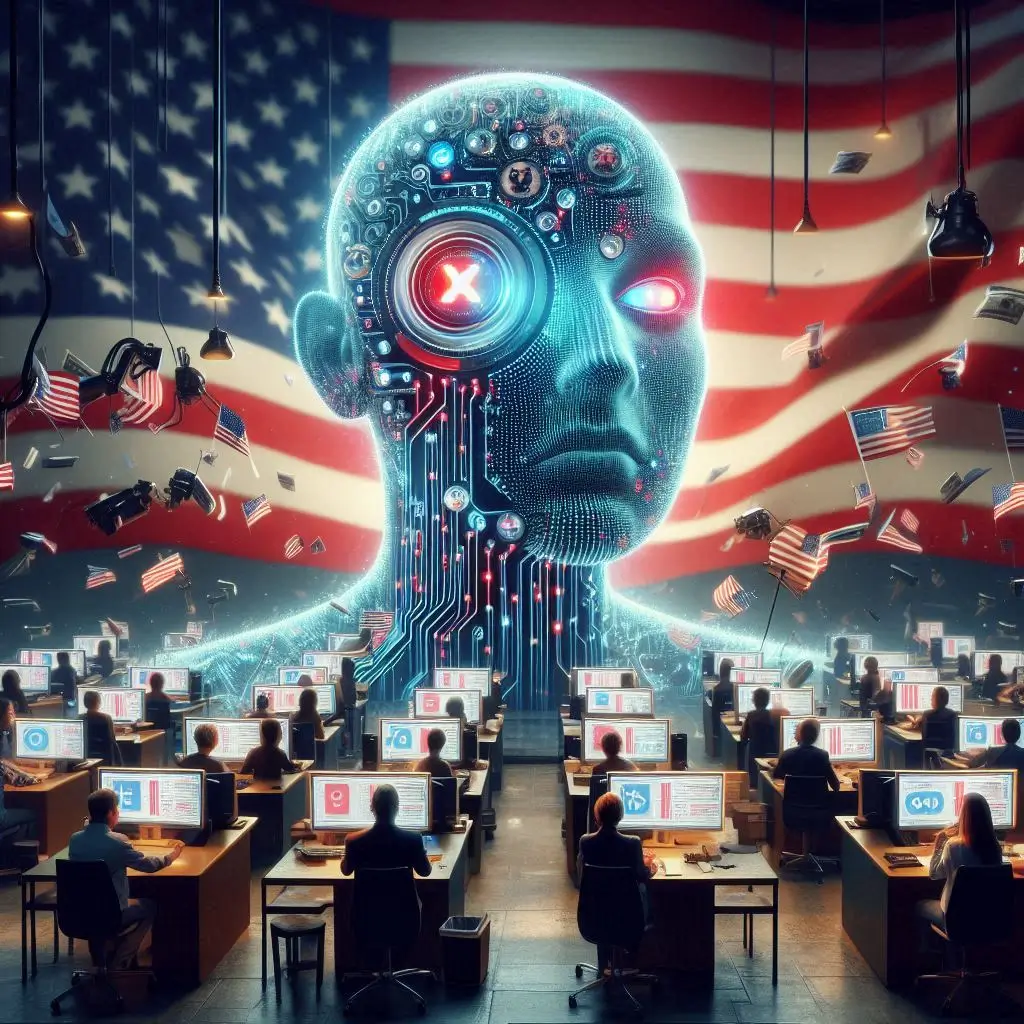Revolutionary AI Image Creation by X’s Chatbot Sparks Election Integrity Fears
In an era where artificial intelligence continues to make groundbreaking advancements, the latest innovation from X —formerly known as Twitter— has sparked a whirlwind of discussions. The revolutionary AI-powered image creation capability of X’s chatbot has pushed technological boundaries but also ignited serious concerns about election integrity. As the 2024 elections loom on the horizon, issues surrounding fake images and manipulated content have come to the forefront of public discourse.
The Power and Potential of X’s Chatbot
The new AI chatbot from X has an astonishing ability to create hyper-realistic images based on textual prompts. This technology, while remarkable, can be a double-edged sword. The potential applications span diverse fields such as marketing, education, and entertainment, but the implications for political arenas are profoundly contentious.
How the AI Works
X’s chatbot employs cutting-edge Generative Adversarial Networks (GANs) to produce near-indistinguishable images from just a few sentences of input. The AI analyzes the prompt, searches its database for relevant features, and compiles them into a coherent and realistic image. This has revolutionized the capabilities of digital imagery but poses substantial risks if misused.
Election Integrity at Risk
The upcoming election cycle has further magnified the apprehensions regarding AI-generated images. Various stakeholders, including policymakers, election authorities, and the public, are increasingly worried about the implications of this technology on fair political processes.
Potential Misuses
The potential for misuse is enormous. Bad actors could exploit this tool to create fake images of candidates or events, thereby spreading misinformation at an unprecedented scale. Here are some alarming possibilities:
- Fake News: AI could generate images that depict false events or behaviors involving political figures. These images, once shared widely on social media, could sway public opinion unjustly.
- Character Assassination: Opponents could use AI-generated images to create controversial or scandalous scenarios implicating political candidates.
- Voter Manipulation: By creating divisive or misleading visuals, the technology could be used to manipulate voter sentiments and decisions.
The current landscape of digital misinformation already presents significant challenges, and the introduction of such powerful AI tools increases these complexities exponentially. Concerns are further exacerbated by the existing polarizations within society, making people more susceptible to believe in and react to falsified content.
Regulatory Responses and Challenges
Given these potential risks, regulatory bodies are finding themselves in a race against time to formulate robust policies and safeguards. However, this is easier said than done. The rapid pace of technological development often outstrips the slow-moving legislative processes.
Proposed Solutions
Several measures have been proposed to mitigate the risks posed by AI-generated images during elections. These include:
- Legislative Action: Introduction of laws that specifically address AI-generated content and hold creators accountable for the misuse of such technologies.
- Technological Safeguards: Development of tools and algorithms to detect AI-generated content and flag it for users and platforms.
- Public Awareness Campaigns: Educating the public about the capabilities and risks of AI-generated images to encourage critical evaluation of visual content.
For a deeper understanding of what legislative actions might look like, you can read our detailed analysis here: Digital Legislation in the Age of AI.
Conclusion
As we stand on the brink of yet another crucial election, the role of technology in shaping political landscapes has never been more pivotal. X’s revolutionary AI image creation capabilities offer enormous potential but also pose severe risks to election integrity. It is incumbent upon all stakeholders—tech companies, regulators, and the public—to grapple with these challenges proactively. Only by doing so can we hope to harness the benefits of AI while safeguarding the core principles of democracy.
Stay tuned as we continue to monitor developments in this field closely. Visit our blog regularly for the latest insights and updates on how technology is shaping the future of elections.
Related Posts
- The Ethics of Artificial Intelligence
- Political Campaigns and Technological Advancements
- Ensuring Election Security in the Digital Age
Source: NPR Article
By keeping abreast of these developments and engaging in informed discussions, we can work collectively towards harnessing technology for positive and ethical uses.


